The pot was found under a street in the commune as part of an archaeological examination prior to the construction of a big new development comprising apartment blocks and commercial buildings, Aargau cantonal authorities said in a statement on Monday.
It is thought to have been buried almost 2,000 years ago, dating it from the time of the Roman legion camp Vindonissa, which was located near where Windisch is now.
Previous archaeological digs in the area have unearthed evidence of human habitation dating from the Roman era, including the foundations of buildings.
But this discovery is the most exciting – and mysterious – yet, feel archaeologists.
The pot is typical of the cooking pots used by soldiers stationed at Vindonissa, however the purpose of its contents – 22 oil lamps, each containing a carefully placed coin – is rather more mysterious.
Each of the lamps is decorated with an image, including the moon goddess Luna, a gladiator, a lion, a peacock and an erotic scene.
The bronze coins are low-value, indicating a symbolic gesture, and date from AD66-67.

Each lamp depicted an image. Photo: Aargau canton archeology department
“What astonished us was the quantity and the combination of coins and lamps,” said Aargau cantonal archaeologist Georg Matter.
“We suspect this is a ritual burial,” he said, but stressed that was only speculation since there haven’t been any other comparable discoveries.
The pot also contained charred fragments of animal bones, ruling it out as a urn for human remains.
“The intentions behind this burial are puzzling at the moment,” added Matter.
Vindonissa was a Roman military camp until 101AD, after which time the area continued to be settled by civilians.
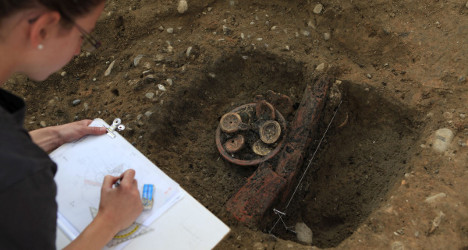
The pot was found under a street in Windisch. Photo: Aargau canton archeology department

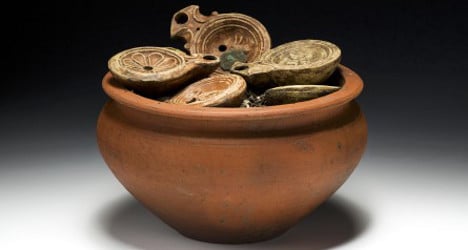
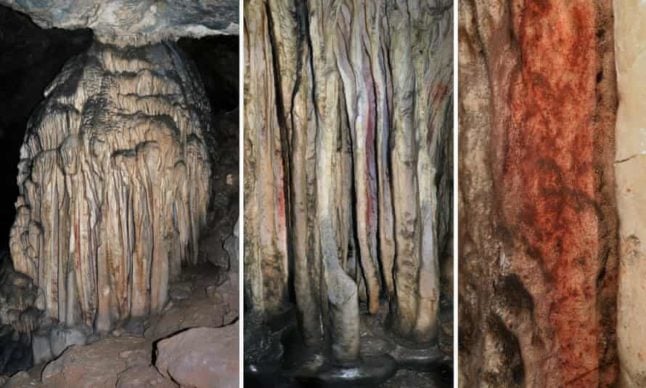
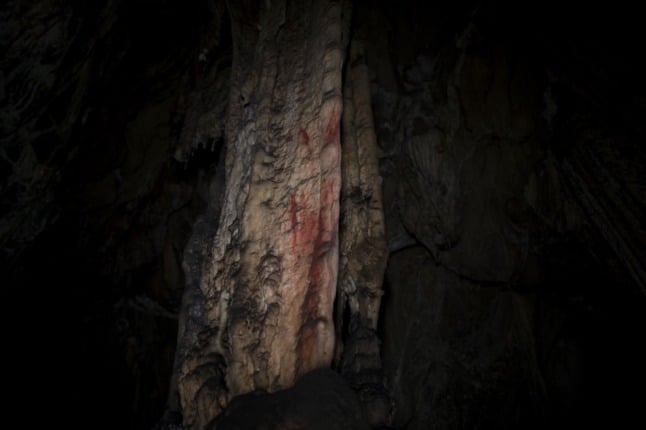
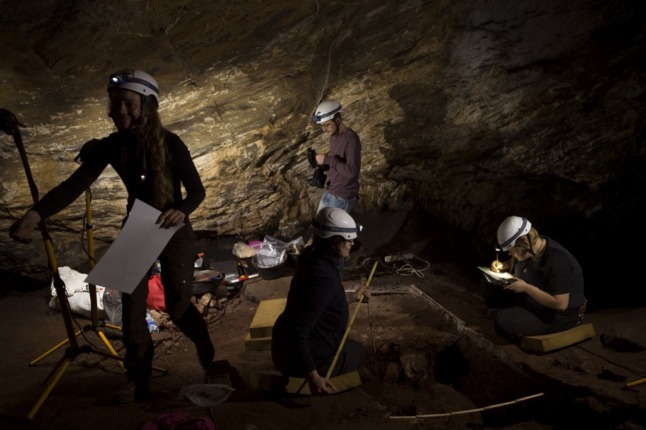
 Please whitelist us to continue reading.
Please whitelist us to continue reading.
Member comments